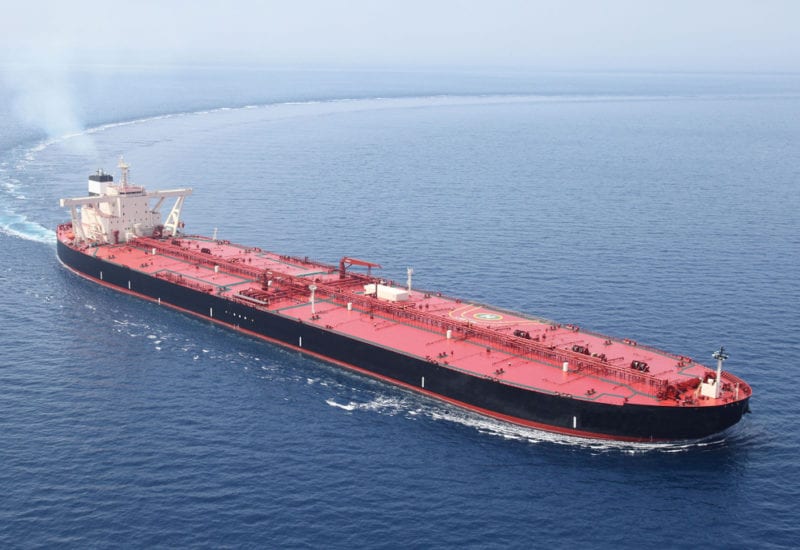(S&P Global Platts) A mostly transparent VLCC market is witnessing an increase in deals being concluded privately as a dismal freight market is offering charterers the luxury to quietly pick and choose their preferred owners as well as keep fixtures under wraps.
The weakness permeating the current supertanker market is such that for every VLCC-sized cargo quoted, there are more than 10 offers, shipping sources said.
The competition to snap up cargoes has given charterers the luxury to choose between quoting the cargo in the open market or going directly to their preferred owners to bargain for the rate they want, a source said.
Freight rates have gone south with the benchmark Persian Gulf-China 270,000 mt VLCC route averaging $6.10/mt in the last five trading months, Platts data showed. In 2019 and 2020, it averaged $12.50/mt and $13.40/mt, respectively.
The VLCC market had a firm run in 2019 due to the sanctions the US had imposed on China’s Cosco Shipping, which resulted in 5% of the global fleet being unable to trade. The support in 2020 came in the form of floating storage demand after global oil demand was slashed by 9.1 million b/d because of the COVID-19 pandemic.
“Many charterers just don’t come into market for vessels now. Out of every three or four shipments they have done, there could be one [cargo] done in a private manner. The assumption that most deals are being done basis contracts of affreightment [COAs] is actually incorrect,” a charterer said.
“With these market levels [freight rates], charterers do no need to squeeze owners, whose earnings are just hovering at zero, or [in] negative [territory],” the same source said.
A surfeit of private deals makes it difficult to arrive at the correct number of cargoes being fixed in the market, the source added.
“The details of [VLCC] fixtures are not being leaked into the market. The ships are disappearing from the [position] list, so [they] must be doing cargoes,” a VLCC broker said.
Many charterers prefer to fix with owners they have previously worked with as it saves them the time needed for negotiation and the clearing of the ship, the source with a VLCC owner said, adding that charterers go directly to the owner or instruct a broker to quote the stem to only one to two owners.
“It is all about convenience and keeping rates similar to last done levels,” he added.
This trend could reverse once the prevailing fundamentals in the VLCC market shifts, which would result in more cargoes being quoted in the market.
Crude supply improving
The OPEC members, along with Russia, agreed in April 2021 to ease crude production restrictions from May to July by bringing back 2.1 million b/d of supply, while keeping cuts to 5.8 million b/d.
This has resulted in the number of monthly VLCC spot fixtures from the Persian Gulf crossing 100 in May and June for the first time since last December, according to shipbrokers’ estimates. From January to April, the monthly spot fixtures averaged around 90, though there was difficulty in getting details of privately done deals.
Excess tonnage supply hurting
The surplus tonnage supply is exacerbating the weakness in the crude tanker market. The slow demolition of older tonnage as well as ships returning from storage business is adding to the supply side.
From a peak of around 232 million barrels last June, the total volume of crude in floating storage have declined to 87 million barrels in June 2021, according to data intelligence firm, Kpler.
“While there has been an increase in scrapping activity over the past several months, given the dismal outlook for tanker demand, overall demolition activity for 2020 was still the lowest since 2016. Floating storage requirements and fewer newbuilding orders have given many older tankers a new lease on life. Just 28 tankers were scrapped during 2020,” according to S&P Global Platts Analytics.
For most of 2021, the daily earnings of VLCC owners from their ships have been perilously close to zero. The substantial amount of revenue generated in 2020 along with the hope of a strong post-COVID-19 recovery are holding back owners from demolishing their old ships despite the strong demolition prices.
“Older vessels are fetching good prices in the sale and purchase market and are sold for further trading rather than being scrapped,” according to shipbroker Poten.
Some of the old ships are allegedly being used in the trading of sanctioned oil, industry sources said.
Shipbroker Gibson believes that up to 10% of VLCC and 6% of Suezmax fleets are currently involved in moving sanctioned oil. The shipbroker thinks the actual number could be higher with some vessels recently sold yet to perform the illicit activity.
For the crude tanker market to witness a strong recovery in the medium term, it is imperative that older and inefficient ships be torched without further delay.



